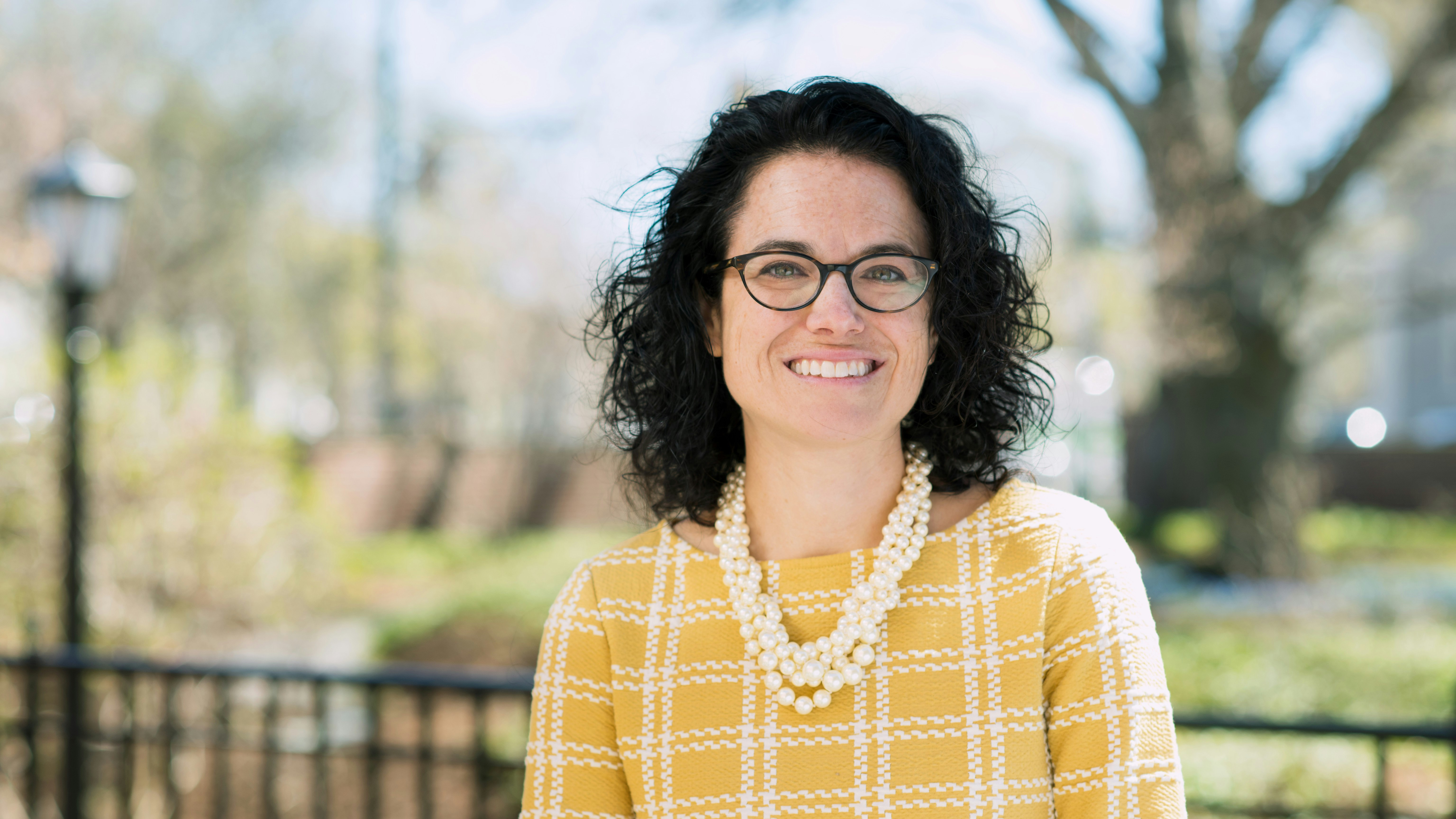An Intimate Narrative of NOW’s Sweeping History

Katherine Turk, Mary I. Bunting Institute Fellow, immerses herself in a movement
I arrived as a fellow at the Radcliffe Institute in September 2018, eager to work in the Schlesinger Library on my book project: a history of the National Organization for Women. Founded in 1966 and enduring to this day, NOW is one of the largest and most prominent feminist membership associations in America.
Scholars tend to agree that NOW has been a significant force in the American past, but none has done the deep research to illuminate the organization’s historical arc and connect its local outposts to its national story. Instead, they have reckoned with its size and complexity in pieces, focusing on specific moments or single campaigns, individuals, chapters or aspects of its structure. I longed to consult a history of NOW as I worked on my first book, Equality on Trial: Gender and Rights in the Modern American Workplace (University of Pennsylvania Press, 2016), which considered how gendered notions shaped the development of workplace rights in roughly the same years of NOW’s existence. Because that broader account of the organization did not exist, I set out to write it myself.
I knew that the project was ambitious. But as I began to take daily visits to the Schlesinger Library, opening box after box, I was struck by the size of the task before me. NOW members and officials have diligently sent their materials to the Library, which is the organization’s central repository. It houses nearly 700 boxes of material in NOW’s two main collections, including memos, reports, and correspondence; the personal papers of more than 30 NOW leaders and members; the records of several New England chapters; complete runs of national newsletters and those of many chapters; over three dozen oral history interviews; and significant audiovisual holdings. Because I had framed my project so broadly, every document in every folder was relevant. I had too many sources.
Historians of women and gender often have the opposite problem. Many have done masterful work on people who left few written materials of their own. These scholars have done relentless digging, read documents against the grain, and interpreted archival silences. I was pleased to have ample material, but I needed a plan to tackle it, and quickly. I decided to zero in on the newsletters and board meeting minutes—sources that could help me to chart a broad overview of the organization’s trajectory. I have worked outward from there, following familiar and lesser-known feminists into their communities and NOW chapters and recovering their relationships to the national organization and to deep shifts in American politics and culture. I ultimately chose three figures whose stories will anchor the book’s narrative and illuminate broader themes. Each of these women had distinct expectations for NOW’s open-ended mission, and the book will trace how their aspirations were ultimately adopted or went unfulfilled.
I have not had to work alone, to my great fortune. The Library’s staff has been flexible, responsive, and utterly supportive as my research has changed tacks. I have also collaborated with five top-notch undergraduate assistants through the Radcliffe Research Partnership program: Clara Bates, Lauren Fadiman, Julia Fine, Frances Hisgen, and Jordan Villegas have worked with great skill and dedication, combing the Library’s NOW-related collections and helping me to interpret their discoveries.
And, of course, the Library will be here for my future visits. As this fellowship year draws to a close, I am comforted to have so many reasons to return.







